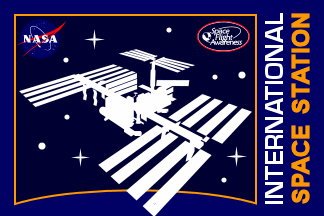Part 1 of 2 Parts
There is a cloud of dangerous debris orbiting the Earth. The U.S. government is taking legal steps to limit the amount of space junk after more than six decades of space races, rocket launches, planetary missions and expanding satellite activity.
The key measure in the government’s legal action is the imposition last week by the Federal Communications Commission of a five-year lifetime for new satellites after they complete their mission. During that time, they will have to deorbit and burn up in the Earth’s atmosphere. Before the imposition of the new rule, a twenty-five-year lifetime has been used as a guideline. However, it has never been legally enforced. The new rule applies only to satellites launched by U.S. operators. Unfortunately, it will not solve the space junk problem on its own. However, experts agree that the new legal action is a good start and in line with international efforts to address space junk.
Carolin Frueh is a space debris expert and an associate professor of aeronautic and astronautic engineering at Purdue University in West Lafayette, Indiana. She said, “It’s about establishing rules for space and having a legal framework that people have to adhere to. That is a big step.”
Earth’s orbital space is vast, and there are currently only about five thousand active satellites. However, it is estimated that there might be millions of pieces of space junk in Earth orbit. This orbiting mass includes entire stages of rockets which can weigh up to several tons. Also present are inactive satellites, lost bits of space equipment, stray nuts and bolds and broken fragments of orbital collisions.
Most of those pieces are tiny. Many are smaller than a U.S. nickel. However, they are orbiting at more than fifteen thousand miles per hour. Experts estimate that there are about thirty thousand pieces of space junk that are big enough and fast enough to be a serious problem. Many could potentially cause a disaster.
There have already been some cases that reveal the danger. Last June, the International Space Station (ISS) was forced to change its orbit to avoid debris from a Soviet-era Satellite. This satellite had been blown up by a Russian test of a new anti-satellite missile. To date, the ISS has had to alter its orbit to avoid orbiting space junk more than thirty times during its twenty-three-year mission. The ISS has already been damaged by space junk. On one occasion, the ISS crew were prepared to leave the Station because of a potential collision.
The space junk problem will only get worse in the future. One recent report estimated that about ten thousand more dangerous pieces of space junk will be in orbit by the end of this century.
Thomas Schildknecht is a professor of astronomy at the University of Bern in Switzerland and the director of the Zimmerwald Observatory. He said, “Space debris is not yet at the stage where we cannot do any more space missions. But the risk is increasing, and if we don’t pay attention, then in 10 years from now we’ll be at the level where we can’t do anything.”
Please read Part 2 next
